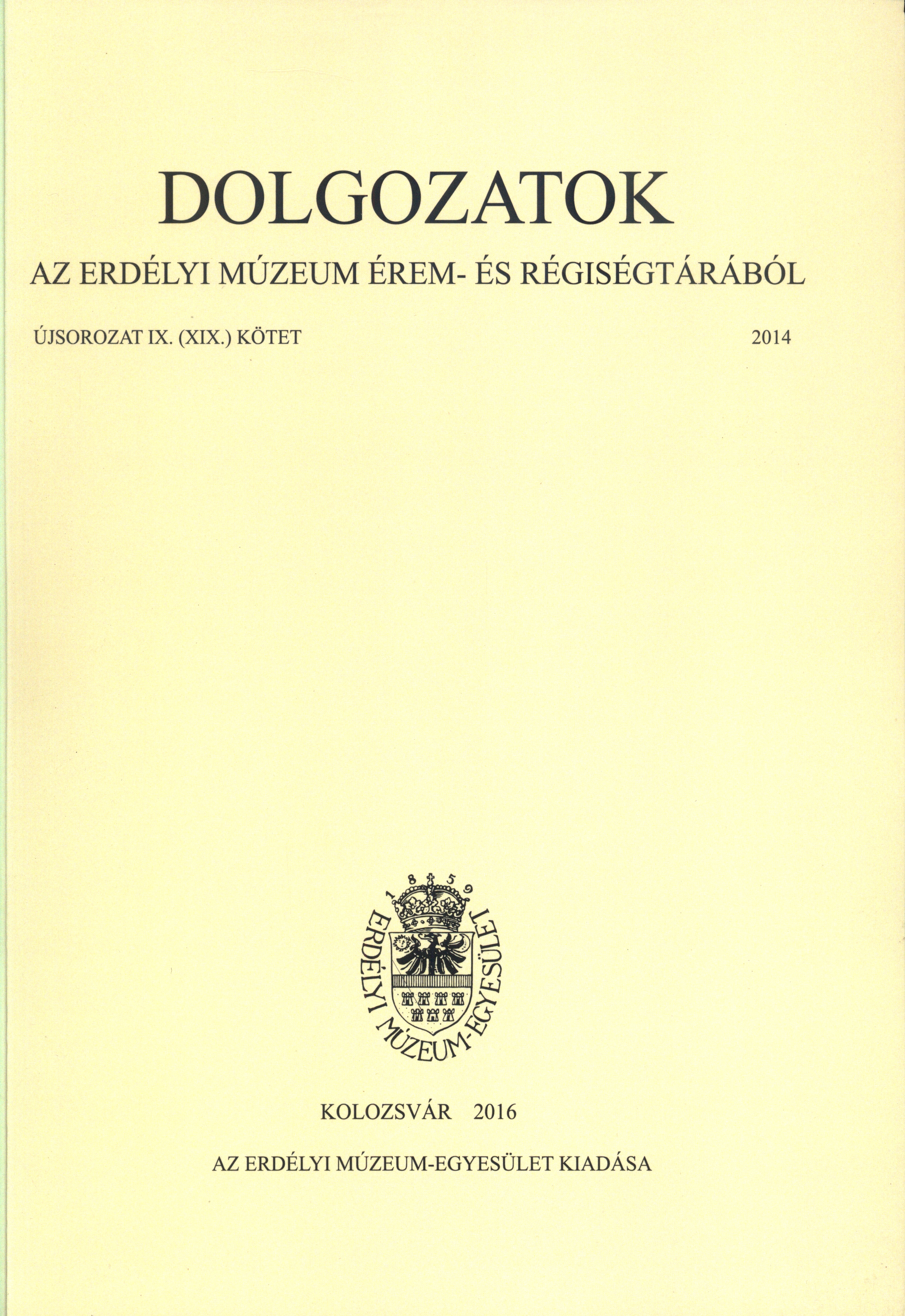Mezővárosok és központi funkciójú falvak a 14–17. században Kraszna és Közép-Szolnok vármegyében
Market-towns and Central Places in Kraszna and Middle-Szolnok Counties in the 14–17th Centuries
Author(s): Tamás EmődiSubject(s): 13th to 14th Centuries, 15th Century, 16th Century, 17th Century
Published by: Erdélyi Múzeum-Egyesület
Keywords: Middle-Szolnok; Kraszna; market-town; market; central place
Summary/Abstract: The study was prepared as a chapter of the history of art topography of two counties on the border regions of Transylvania and East-Hungary. Given the scarcity of sources, it only wishes to provide an overview of the picture of the town system network of Sălaj Region (Szilágyság) in the light of the trade roads significant for the salt transportation, the markets encouraging the trading of goods (commerce), the privileges and legal status rated as further indicators of urbanisation, handicrafts, customs, mendicant orders, peregrination, and the data of municipal topography. In the Middle Ages, there were no actual cities (civitas) in Kraszna (Crasna) and Middle-Szolnok (Közép-Szolnok, Solnocul de Mijloc) counties, but in the category of market-towns and considering the measures of the place, the rate of urbanisation has not fallen below the counties in the neighbourhood, while in the case of Transylvania the rate is somewhat higher. There are twelve localities that have been called oppidum at least once until the first quarter of the 16th century; in Middle-Szolnok (Solnocul de Mijloc) these are the following: Zalău (Zilah), Tășnad (Tasnád), Cehu (Cseh), Hodod (Hadad), Coșeiu (Kusaly), Santău (Szántó), Dorolț (Daróc), Acâș (Ákos), and Chereușa (Kőrös) in Middle-Szolnok (Solnocul de Mijloc), while in Kraszna (Crasna) Nușfalău (Nagyfalu), Crasna (Kraszna), and Șimleu (Somlyó). The development of Săuca (Sződemeter) has declined in the 15th century, similarly to that of Chereușa (Körös) by the end of the century, while, at the same time, the previously insignificant Cehu (Cseh) and Șimleu (Somlyó) start emerging. All of these localities were landlord squires, that is feudal districts in a legal sense, out of which two (Zalău – Zilah and Tășnad – Tasnád) were episcopal properties. Applying the centrality categories elaborated by András Kubinyi on these municipalities, the following picture is outlined about the town system of Sălaj – Szilágyság (a picture that undoubtedly needs revision in the course of discovery of further data): before the middle of the 16th century Zalău (Zilah) occupies place on the verge of the category of significant towns and market-towns of town function; Tășnad (Tasnád), Coșeiu (Kusaly) and Nușfalău (Nagyfalu) were market-towns of partially town function; Cehu (Cseh), Hodod (Hadad), Șimleu (Somlyó), Santău (Szántó), Acâș (Ákos), Șărmășag (Sarmaság), Crasna (Kraszna), Berchez (Magyarberkesz) and Camăr (Kémer) are regarded as ordinary market-towns, Dorolț (Daróc), Șamșud (Sámson), Săuca (Sződemeter) and Chereușa (Kőrös) – designated an oppidum only once – as insignificant market-towns, while Carastelec (Kárásztelek), Sălăjeni (Ökörító), Someș-Uileac (Újlak), and Kene are considered as villages of central function (central places). Among the group of villages of larger populations and occasionally of central function, in the 16- 17th centuries Boghiș (Bagos), Pir (Pér), Ilișua (Ilosva), Jibou (Zsibó), and Pericei (Perecsen) stood out among the market-towns.
Journal: Dolgozatok az Erdélyi Múzeum Érem- és Régiségtárából. Új sorozat
- Issue Year: 2014
- Issue No: IX
- Page Range: 159-186
- Page Count: 28
- Language: Hungarian

